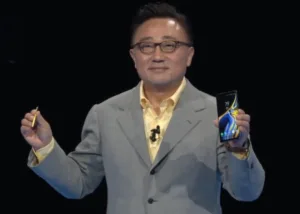Samsung took to the stage today to officially launch the Galaxy Note 9, alongside its new Galaxy Watch, Galaxy Home smart speaker and enhanced integration with Bixby voice control and Spotify music across the company’s entire product range. 3,000 attendees, including the media and industry partners, attended the presentation in New York City, United States.
The presentation began with a montage of the Note 9-related teaser videos that were released last week, indicating that the new device will feature better battery life, storage space and performance than its predecessors. The company poked fun at the media’s reaction to the very first Note device, suggesting that it was far too big. That is, before it ushered in an age of mobile devices that seem to get bigger every year. “Thank you for saying nay to the naysayers,” read a message that flashed up on the screen.
DJ Koh, CEO and president of Samsung’s mobile communications business, appeared and hailed an age of “seamlessly connected devices”, part of Samsung’s “vision for the future”. “No company is in a better position to achieve this vision than Samsung,” he remarked. The company says its new product range is designed to be “open, private and seamless”, and maintains its “commitment to meaningful innovation”.
Koh handed the stage over to Drew Blackard, director of product marketing, to properly introduce the Galaxy Note 9. I’d like to take a moment to mention the impressive visuals and optical illusions used during the presentation. Synchronised 3D animations displayed across a giant video wall, incorporating the stage floor, main backdrop and several smaller screens above. A stand-out moment saw the Note 9 rising out of the ground and floating in mid-air — colour me impressed! Considering how good it looked on my computer screen, I can only imagine how it must’ve looked to those sat in the audience.
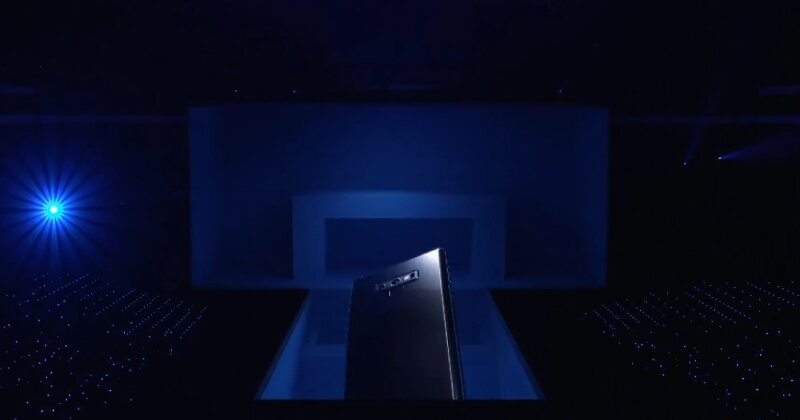 The Galaxy Note 9 emerges from the floor. Pictures don’t do the quality of the animation justice!
The Galaxy Note 9 emerges from the floor. Pictures don’t do the quality of the animation justice!
Back to the matter at hand: the device features a 6.4″ end-to-end display, the largest ever seen in a Note device. (The exact display type wasn’t mentioned, but we all know that the Note 9 will use the company’s Super AMOLED display tech.) The resolution 1440 x 2960 pixels, tscreen has an 18.5:9 aspect ratio and ~516 ppi density.
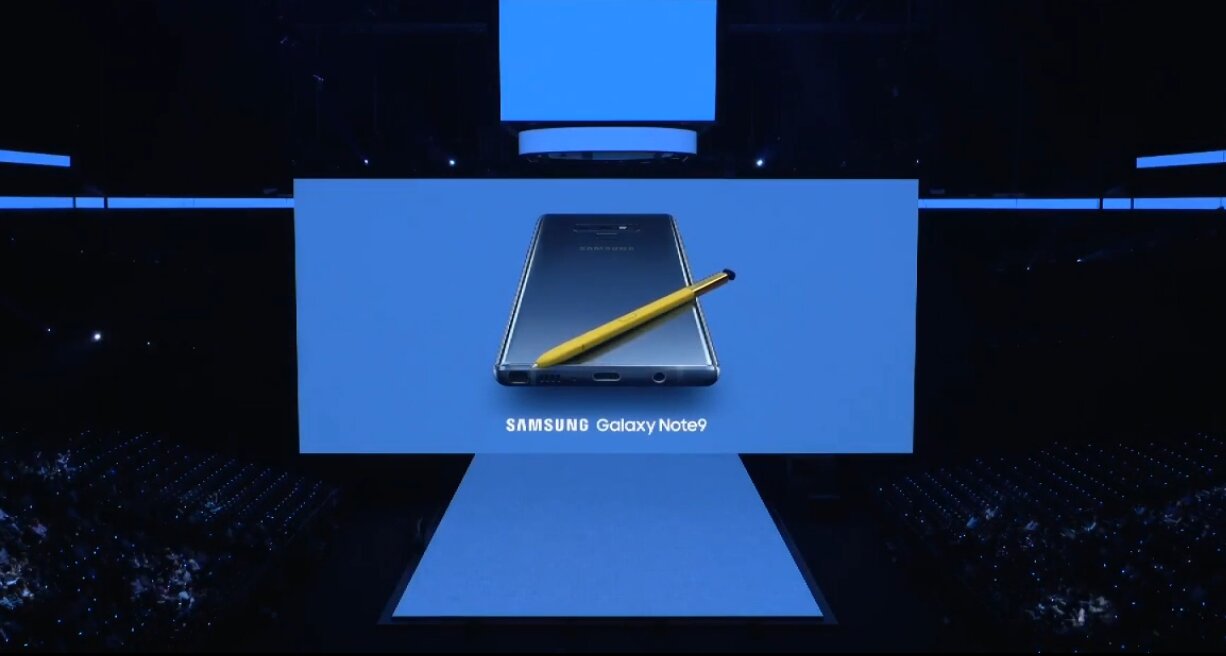
The body is constructed using a special diamond-cutting technique and the fingerprint scanner has been moved closer to the underside of the camera to improve its reachability. The device will be available in four colours: Ocean Blue, Lavender Purple, Metallic Copper and Midnight Black. It will include a 4,000mAh “all-day” battery — again, the largest of any Note device. It will come in two storage space options: 128GB and 512GB, with a micro SD card slot providing the means to expand the storage by a further 512GB, up to a potential 1TB of storage space.
DJ Koh holds up the Galaxy Note 9 and S-Pen following the big reveal.
Blackard made a blink-or-you’ll-miss-it mention of the processors powering the device — no specifics, just that the chipset is 10-nanometer and 33% more powerful than the Note 8, alongside an unspecified GPU 23% more powerful. The device will also support network speeds of up to 1.2Gbps. Whatever the exact technology may be, Epic Games are certainly impressed.
Founder Tim Sweeney briefly appeared to laud the device as the best way to experience the new Android version of Fortnite, a console-quality port supporting up to 100 players. Sweeney also announced that the beta will launch for Galaxy device owners first, and Note 9 buyers will receive a special bonus to use in the game.
After introducing the device’s AKG stereo speakers and ‘water carbon’ CPU cooling system, Blackard delved into the finer points of the Note 9’s camera and its AI features. As well as a dual-aperture lens that adjusts to the light, the camera is able to detects flaws in photographs, such as closed eyes or image blur, and alerts the user so they can take a second shot. Scene recognition capabilities also adjust colour tones automatically.
This led nicely into a section on the new S-Pen stylus, which now doubles as a remote control. As well as capturing photos at a distance, the pen can be used to play and pause videos and flick through PowerPoint slides — in fact, presenter Jonathan Wong revealed that he was actually controlling the presentation with the S-Pen. The pen charges by slotting it into the handset. A full charge takes only a minute and lasts for half an hour.
Wong also explored the Note 9’s enhanced DeX experience. DeX, introduced with the Galaxy S8, is a way of using the handset much like a desktop PC, with all the computing power residing in the smartphone. With the Note 9, the DeX mode automatically starts up once the device is connected via an HDMI adapter, without the need for a separate docking device.
The handset can still be used as a trackpad and virtual keyboard like before, but this functionality is now confined to an app that can be launched and closed at will, meaning that the phone’s normal functions can also be used at the same time as DeX is being displayed on the larger screen. The refreshed, dual-screen DeX experience is also coming to Samsung’s new Galaxy Tab S4, which is released August 10th.
Elina Vives, head of marketing for wearables, then came on stage to introduce the Galaxy Watch, Samsung’s next smartwatch. The water-resistant watch will retain Samsung’s circular design and comes in two different size options: 42mm and 46mm. It features a high-resolution AMOLED touch display and Corning Gorilla Glass DX+ for added protection. It can be paired with a smartphone but also incorporates LTE 4G cellular functionality for standalone use.
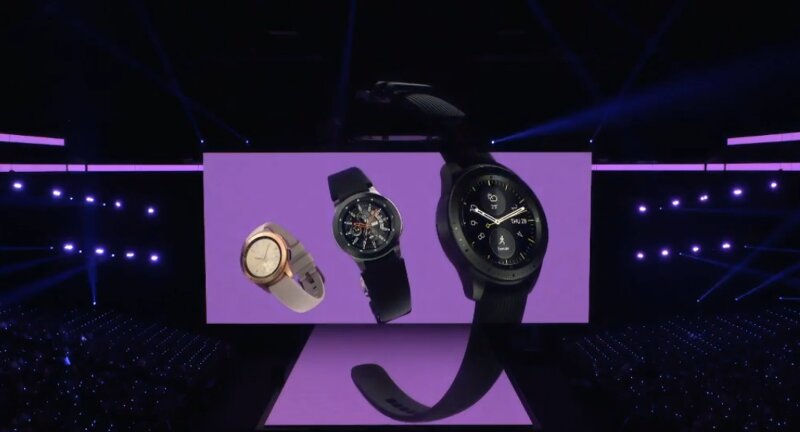
Vives teased an “optimised processor”, better integration with calendar software and enhanced health features, including a heart rate monitor that can detects the user’s baseline heart rate and alerts them to significant changes, plus a feature that measure’s users’ sleep pattern and quality. She also revealed that the Galaxy Watch will last for “several days” on a single charge and can be charged wirelessly via the new Wireless Charger Duo, a device that can charge the Galaxy Watch and a compatible smartphone at the same time.
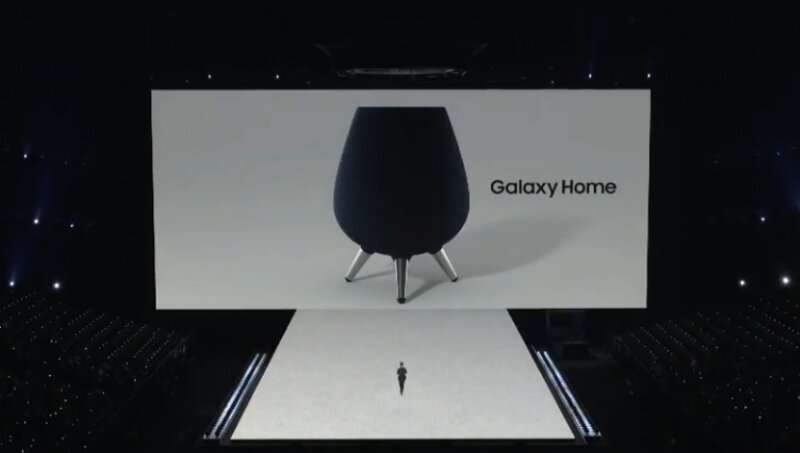
Samsung also used the presentation to talk about the Bixby voice assistant, which allows users to ask follow-up queries to questions without needing to repeat themselves, book a table in a restaurant, navigate to the location or order an Uber to get there instead. The technology automatically links to other platforms like Ticketmaster and Yelp without the need for their respective apps to be installed on the device. More details on Bixby will be revealed at the Samsung Developer Conference in November, the company said.
The company then transitioned into an announcement of its new partnership with Spotify and the reveal of its Bixby smart speaker, Galaxy Home, which incorporates eight microphones and far-field voice recognition technology. All these devices, including Samsung’s range of smart home appliances, have been designed to work together seamlessly. Say a user walks into their home listening to music on the Note 9 — that music can be transferred to a Samsung smart TV or Galaxy Home speaker at the touch of a button.
DJ Koh concluded the presentation by revealing that the Galaxy Note 9 will be available from August 24th. We also now know that the device will be priced at $1,000 for the 128GB version, or $1,250 for 512GB.

